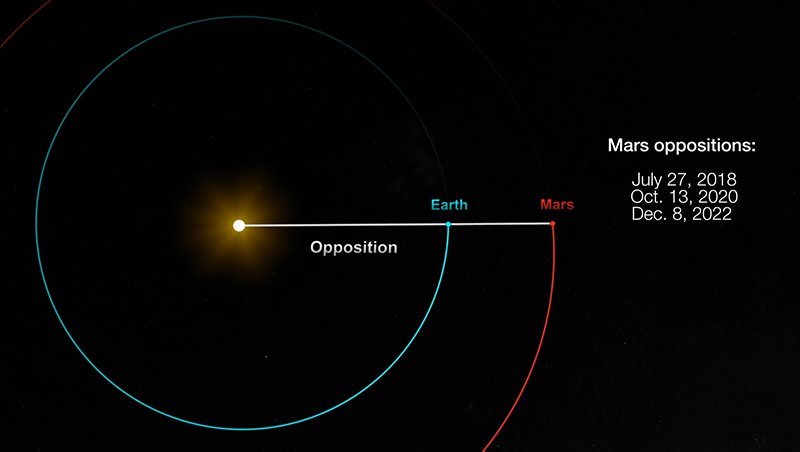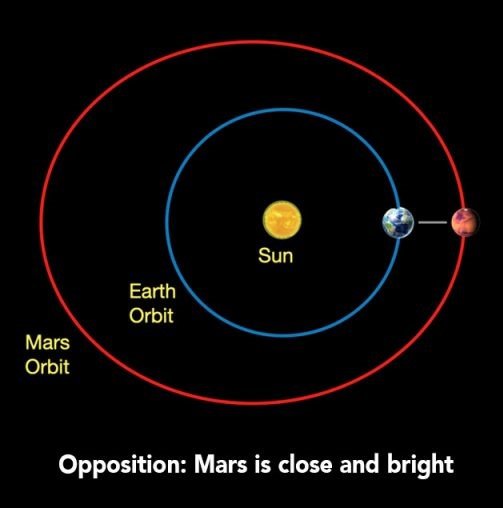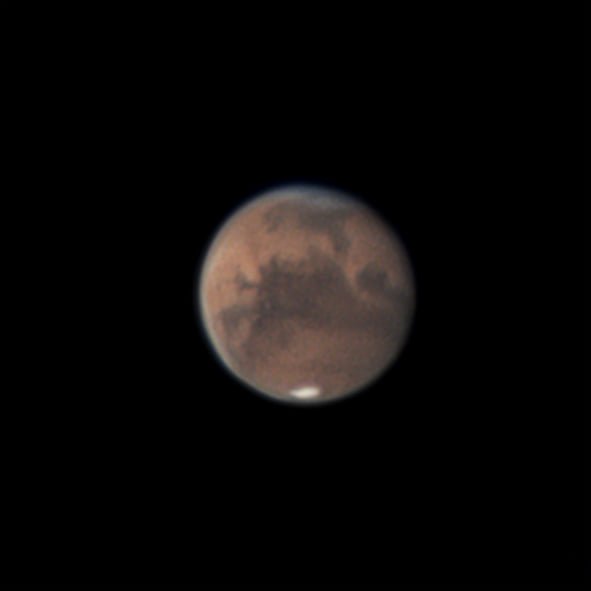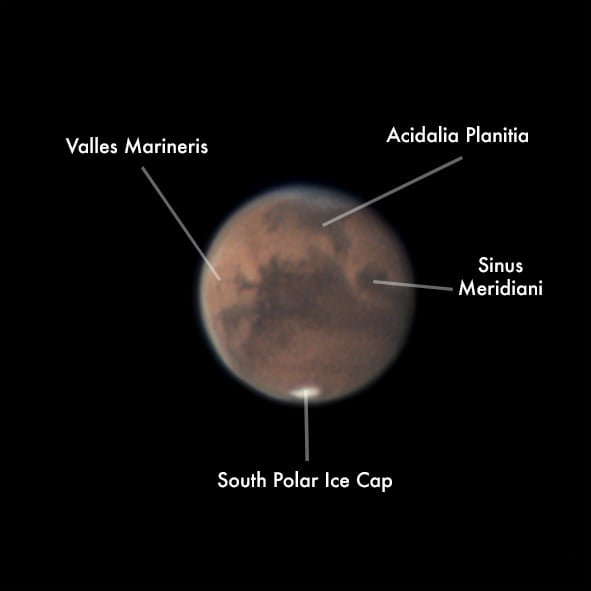We’re keeping our eyes on Mars this month, and you should too! It will be pretty easy because Mars is currently the 5th brightest object in the sky - only appearing dimmer than the Sun, Moon, Venus, and Jupiter.
This increase in brightness is due to Mars’ current position in the solar system compared to Earth and the Sun. On December 8, Mars will be in opposition - meaning that Mars and the Sun are on opposite sides of the Earth. As the Sun sets in the West, Mars will begin rising in the East. It will remain visible high in the sky all night long. And because the Sun is behind us, sunlight will fall directly on Mars, making it appear brightest. The best time to view Mars is when it reaches its highest point in the night sky. At opposition, that occurs around midnight. Families with young children who may not be able to stay up that late just need to wait a few weeks for Mars to be high in the sky in the evening. Although Mars won’t be quite as bright as at opposition, it will still be more brilliant than the brightest stars. In fact, it won’t be this bright again until the year 2031.

Image credit: NASA
Oppositions of Mars happen about every two years. That makes sense because Earth takes a year to orbit the Sun, and Mars takes about two years. Every 26 months, we catch up to Mars, passing between it and the Sun. But not all oppositions are the same - some are brighter than others.
The planets in the solar system don’t orbit the Sun in perfect circles but in ellipses. This means that their distance from the Sun and each other changes. When a planet is closest to the Earth in its orbit, we say it is at perigee. When it’s at its farthest point, we say it is at apogee. The closer Mars and Earth are to each other at opposition, the brighter the planet will appear. Right now, Mars is at an average distance from the Earth of about 50.6 million miles away.

Image credit: NASA
If you have a telescope with a diameter of at least 4 inches and clear skies, you will get a good view of the red planet. Observe Mars at the same time every night over the next 40 days, and you will see the entire planet. This is because Mars’ day, called a sol, lasts about 38 minutes longer than an Earth day. So night by night, Mars will appear to slowly rotate backward - to the west - and all the major features will appear. Look for the north polar ice cap near the limb of the planet. You can also try to spot albedo features - light and dark regions on the planet. Lighter regions are usually desert areas, and darker regions are exposed rock. Clouds may also be visible, though they are best seen near the edges of the planet or along the terminator. Because it is springtime on Mars, clouds may be more prevalent.


Image copyright: Derek Demeter (2020). Used with permission.
So dust off that ‘scope and head to some dark skies for the best views of Mars we’ll have in a while. Don't have a telescope and want to see Mars at its brightest? Join us in the observatory for our Mars Opposition Event.